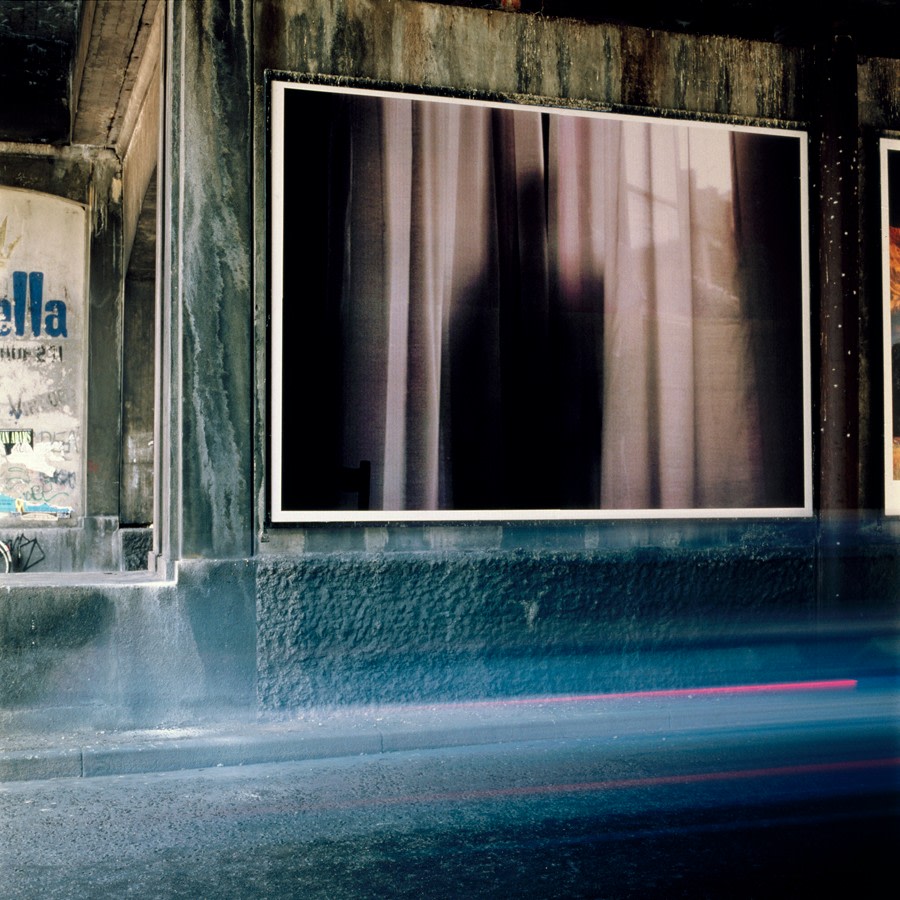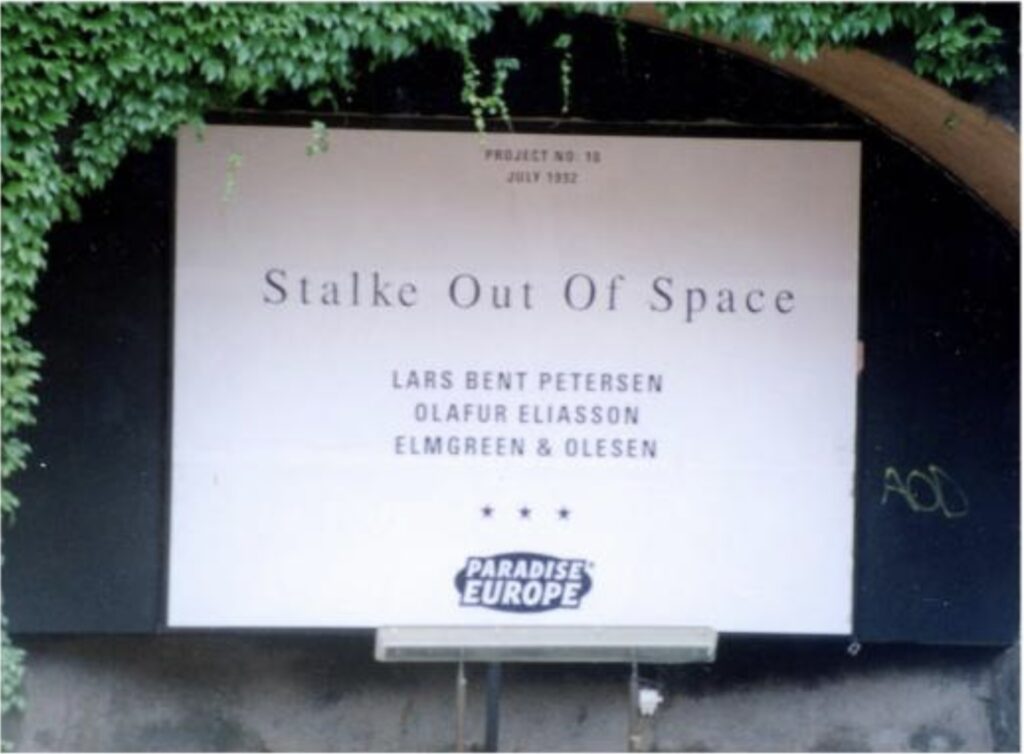
In July 1992 Felix Gonzalez-Torres showed “Untitled,” a photograph of a figure silhouetted against a curtained window, in Paradise Europe, a group exhibition in Copenhagen of 120 artist billboards organized by Bizart, Ny Carlsberg Glyptotek, and five galleries. [One, the local gallery, Stalke Out of Space, had already begun postering Copenhagen as an artistic practice and distribution platform in 1991, and was itself part of the exhibition, in addition to representing four of the artists. But let’s come back to that.]
Felix traveled to Copenhagen and presented a lecture there, which we know from a 1993 interview, published by A.R.T., when Tim Rollins mentions “grumbling” over “the lack of overt political or Latino content” in his work:
I had a problem just recently in Copenhagen where I went to give a lecture. A man in the audience immediately started talking about winning the battle for multiculturalism. I said: “Look, okay, first I have trouble with that kind of language about winning battles. That’s too male-oriented for me. That’s too macho, that’s too much about war.” Then he said something about numbers-a certain amount of women, a certain amount of Hispanics, etc. No, multiculturalism is not about numbers, it’s about inclusion. It’s about opening up the terms of the argument, opening up the terms of the discourse so that everybody can participate with equal footing. It’s not about naming two female, three Hispanics, four whites, five blacks… It’s not about quotas. Sometimes quotas are necessary when it comes to concrete things like businesses, but in culture it’s more complex. It’s about opening up the terms of argument, and it’s about re-addressing the issue of quality and who dictates and defines “quality.”
Now in the latest episode of The Art Newspaper’s podcast, A Brush With…, where Ben Luke interviewed Michael Elmgreen & Ingar Dragset, we learn that Michael was in the audience for Felix’s lecture. Michael, who still considered himself a poet on the threshold of being a fine artist, wrote to Felix, inviting him to dinner, “because I had a lot of questions about how to do art, and how to deal with identity in such a fantastic way, like he did.”
It’s a wonderful story which the super-prepared Luke had never heard, and which I, who’ve been immersed in these artists’ work for decades, had never heard, either. And yet it seems to have been profoundly important to Michael’s work: “We spent a long night where he generously gave me a lot of inspiration, and a lot of hope for continuing doing art projects.”
In the interview Michael didn’t mention the year, so I pulled that, and the show, from Felix’s exhibition history. Felix’s response to Rollins resonated anew with Elmgreen’s response to Josh Spero in the Financial Times in October:
He is slightly less delighted when I read out a quote from a 2002 review, which says — in an apparently supportive way — that Elmgreen & Dragset had staged “a ‘gay infiltration’ of minimalism’s famously macho high aesthetics”. “Minimalism has been infiltrated by queerness from the very start,” Elmgreen says. “I’m sorry, dear heterosexuals, but you can’t trademark minimalism as yours that will [then] be infiltrated by queers . . . You don’t need to accept being boxed in as a queer artist and having certain sets of aesthetics that are provided to you because you are not a heterosexual man.”
What I did not expect to find was the full artist list for Paradise Europe [pdf]: Lorna Simpson, Guillermo Paneque, Sean Landers, Felix Gonzalez-Torres, Emilio Fantin, Federico Guzman, Formento-Sossella, Tommaso Tozzi, Lars Bent Petersen, Stalke Out of Space, Alan Belcher, Olafur Eliasson, Lothar Hempel—and Elmgreen & Olesen.

So not only was Michael in the audience, he was in the show. And in a collaboration with, I think, Henrik Olesen. Olesen’s CV does not include this show, or any work before 1995. Elmgreen & Dragset, meanwhile, mark the beginning of their artistic collaboration to 1995, after becoming a couple in 1994.
Besides that Stalke poster above, the only other prominent online mention of Elmgreen & Olesen is of work held at the Esbjerg Kunstmuseum.
But as much as I want to know more about this collaboration and their work, I’m even more intrigued by the idea of Elmgreen— and Dragset—being inspired by Felix’s work. And not just because I have a work from the 1990s by them, that is a slide projection on a wall of the silhouette of a man. For years, I’d lowkey regretted not also buying the emptied pairs of jeans and underwear on the floor, which was in the same show. But now I think I’m good. And I want to dig that piece out of storage again.
